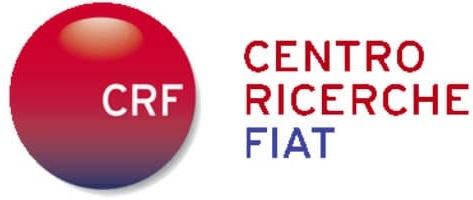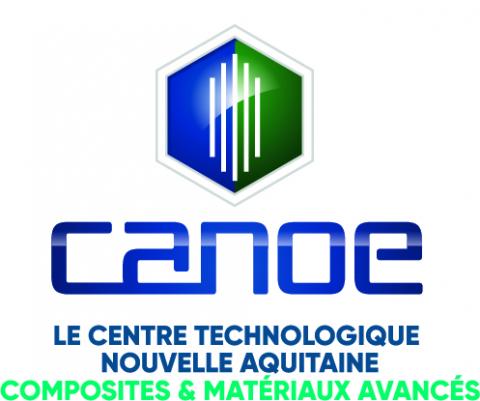Objectives
CIRCULAR-TP project focuses on upscaling advanced materials, their transformation, joining, separation and recycling processes, to allow the substitution of full metallic components from the automotive sector by highly hybridized components made of the combination of metal and thermoplastic composites. The specific objectives of the CIRCULAR-TP project are:
- To scaleup to TRL 7/8 the production of thermoplastic composite UD tapes based on a high performance polyamide matrix and low cost (50 K) carbon fibres or glass fibres on the basis of a resin and a tape impregnation process developed up to TRL 5 by Project Partners Arkema and Canoe:
- From 3 tapes in parallel produced at 10 meters per minute today to 16 tapes in parallel at 30 meters per minute at end of project.
- Moving from the use of costly 12 or 24 K industrial carbon fibre today to “low cost” 50 K carbon fibre tows for tape manufacturing.
- Reaching fibre volume fractions of 60% by volume in tapes vs ca. 53% today.
- To increase the productivity of a standalone automated tape layup system “PrePro 2D”. Already developed to TRL 5 by FraunhoferIPT, the tool shall be made ready for licensing and commercialization by a systems integrator or a new company (TRL 8).
- Demonstrate the feasibility of reaching UD tape deposition rates of ca. 60-100Kgs/hr for near net shape pre-form production with tailored consolidation.
- To demonstrate that the laser joining technology developed to TRL 5 by Tecnalia to assemble composites and metal can be suitable for large series automobile part production (TRL 7):
- Proven joining speed with a single cell > 5 cm2/second at end of project.
- Homogeneous peel strength >25 to 30MPa for the U-shaped metal/composite B-Pillar demonstrator of the project.
- To design a complete laser cell for automatic joining of plastics and composites to metals and bring it to a stage ready for licensing to a systems integrator for commercialization (TRL 8):
- The cell includes the laser system, the robot to guide the beam, the clamping device and the quality control unit for quality assurance.
- To develop a preform and part production process that reduces the production waste to near zero, while optimizing part design for cost and performance through modelling, optimal fibre choice (carbon or glass) and fibre orientations:
- Design of “near net-shape” 2D preforms with optimized fibre orientations ready for the final thermoforming/stamping of the part (already demonstrated to TRL 5 by Arkema, as described in the Technical Feasibility and IP section).
- To produce a demonstration hybrid part representative of a B-Pillar and validate demonstrator performances vs the requirements set by the OEM Project Partner, CRF:
- Reach a 30% weight gain for the hybrid solution of the project vs a 100% steel B-Pillar.
- Measure energy absorption for the demo part in test representative of the standard automotive side beam crash test.
- To validate the part production cycle time and the economic viability of the solution:
- Provide a cost analysis for the part (taking into account the part production cycle time proven at project end, material costs as well as Capex/Opex estimates) assuming production series > 50.000 cars per year.
- Demonstrate that the over-cost vs a 100% steel B-Pillar stays below 3€ per kg of weight gained.
- To define the most suitable dismantling technology for part recycling as well as best recycling process and conditions for the TPcomposite material at the end-of-life of the vehicle with the Project Partner TU Delft:
- Prove that thermoplastic composite-metal joints can be disassembled by applying heat by means of a low quality heat input allowing easy separation of materials for recycling (in accordance with EU guidelines).
- Define the grinding and separation process for best valorisation of the recycled TP composite material.
- To demonstrate the possible reuse of recycled TP-composite materials in an injection moulding automotive application defined by Idertia (Engine Oil Cover):
- Demonstrate recycling of the fibre reinforced thermoplastic material in a reuse case as raw material for injection moulding in an automotive application.
- To carry out a comparative life cycle analysis on a B-Pillar manufactured using the hybrid solution of the Circular-TP project vs the 100% steel solution (ENEA).
It is worth mentioning that near-net shape technologies are existing (see Dieffenbacher2, Fibreforge etc.), but a follow-up consolidation is required.
CIRCULAR-TP aims at near-net shape production with tailored consolidation in order to drastically reduce cycle times for part production. Tailored consolidation means that the system is capable of adjusting the required degree of consolidation (from in-situ to partly consolidation within one part). Thus, a subsequent consolidation step is not required and can be achieved in the 3D forming or injection moulding step. The possibility to achieve also full in-situ consolidation in a single step allows for skipping these steps without a loss of part quality when only a flat laminate out of tape is required. As consequence, the productivity and consolidation quality can be tailored to the application and production scenario. This is not possible with current existing systems. Further, the capital expenditure required for this solution is expected to be less than 50% of the costs for comparable industrialized existing systems. This will be more precisely quantified during the project.
- This KAVA activity matches the mission and strategic objectives of the EIT RawMaterials:
- The materials developed in the project will allow to reduce the amount of High Strength Steel required in the future for car manufacturing in Europe, thus reducing the need for Critical Raw Materials (used in HSS alloy formulations).
- Europe is a technology leader both for car manufacturing and for high performance composite materials. By developing a light-weighting technology that can be introduced more easily in Europe’s OEM plants than other composite technologies, CIRCULAR-TP contributes to keeping the European leadership in automotive manufacturing.
- The materials solutions developed in CIRCULAR-TP are from the start conceived in a Circular Economy approach. They are thus perfectly in line with the ambitious package adopted in January 2018 by the European Commission to stimulate Europe's transition towards such a circular economy (http://ec.europa.eu/environment/circulareconomy/index_en.htm).
CIRCULAR-TP project "closes the loop" of product lifecycles through greater recycling and reuse, and brings benefits for both the environment and the economy.










